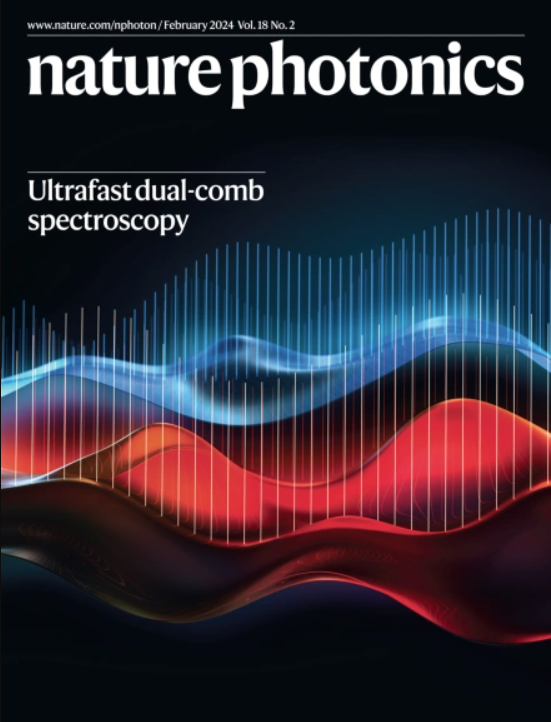Angular dispersion suppression in deeply subwavelength phonon polariton bound states in the continuum metasurfaces
IF 32.9
1区 物理与天体物理
Q1 OPTICS
引用次数: 0
Abstract
Quasi-bound states in the continuum (qBICs) achieved through symmetry breaking in photonic metasurfaces are a powerful approach for engineering resonances with high quality factors and tunability. However, miniaturization of these devices is limited as the in-plane unit-cell size typically scales linearly with the resonant wavelength. By contrast, polariton resonators can be deeply subwavelength, offering a promising solution for achieving compact devices. Here we demonstrate that low-loss mid-infrared surface phonon polaritons enable metasurfaces supporting qBICs with unit-cell volumes up to 105 times smaller than the free-space volume $$\lambda_{0}^3$$ . Using 100-nm-thick free-standing silicon carbide membranes, we achieve highly confined qBIC states with exceptional robustness against incident-angle variations, a feature unique among qBIC systems. This absence of angular dispersion enables mid-infrared vibrational sensing of thin, weakly absorbing molecular layers using a reflective objective, a method that typically degrades resonance quality in standard qBIC metasurfaces. We introduce surface-phonon-polariton-based qBICs as a platform for ultraconfined nanophotonic systems, advancing the miniaturization of mid-infrared sensors and devices for thermal radiation engineering. Phonon polariton quasi-bound states in the continuum realized in a dielectric metasurface patterned with a subwavelength lattice of elliptical holes in a commercially available free-standing, large-area 100-nm-thick silicon carbide membrane is demonstrated, attractive for applications in mid-infrared optics, such as molecular sensing and thermal radiation engineering.


连续介质超表面中深亚波长声子极化子束缚态的角色散抑制
通过光子超表面的对称破缺实现连续介质中的准束缚态(qbic)是一种具有高质量因子和可调性的工程共振的有效方法。然而,这些器件的小型化受到限制,因为平面内的单元尺寸通常与谐振波长呈线性关系。相比之下,极化子谐振器可以深度亚波长,为实现紧凑的器件提供了一个有前途的解决方案。在这里,我们证明了低损耗的中红外表面声子极化子使支持量子bic的超表面的单位胞体积比自由空间体积小105倍\(\lambda_{0}^3\)。使用100纳米厚的独立碳化硅膜,我们实现了高度受限的qBIC状态,对入射角变化具有出色的鲁棒性,这是qBIC系统中独一无二的特征。这种角色散的缺失使得使用反射物镜对薄的、弱吸收的分子层进行中红外振动传感成为可能,这种方法通常会降低标准qBIC超表面的共振质量。我们介绍了基于表面声子极化的量子量子集成电路作为超约束纳米光子系统的平台,推进了用于热辐射工程的中红外传感器和器件的小型化。
本文章由计算机程序翻译,如有差异,请以英文原文为准。
求助全文
约1分钟内获得全文
求助全文
来源期刊

Nature Photonics
物理-光学
CiteScore
54.20
自引率
1.70%
发文量
158
审稿时长
12 months
期刊介绍:
Nature Photonics is a monthly journal dedicated to the scientific study and application of light, known as Photonics. It publishes top-quality, peer-reviewed research across all areas of light generation, manipulation, and detection.
The journal encompasses research into the fundamental properties of light and its interactions with matter, as well as the latest developments in optoelectronic devices and emerging photonics applications. Topics covered include lasers, LEDs, imaging, detectors, optoelectronic devices, quantum optics, biophotonics, optical data storage, spectroscopy, fiber optics, solar energy, displays, terahertz technology, nonlinear optics, plasmonics, nanophotonics, and X-rays.
In addition to research papers and review articles summarizing scientific findings in optoelectronics, Nature Photonics also features News and Views pieces and research highlights. It uniquely includes articles on the business aspects of the industry, such as technology commercialization and market analysis, offering a comprehensive perspective on the field.
 求助内容:
求助内容: 应助结果提醒方式:
应助结果提醒方式:


